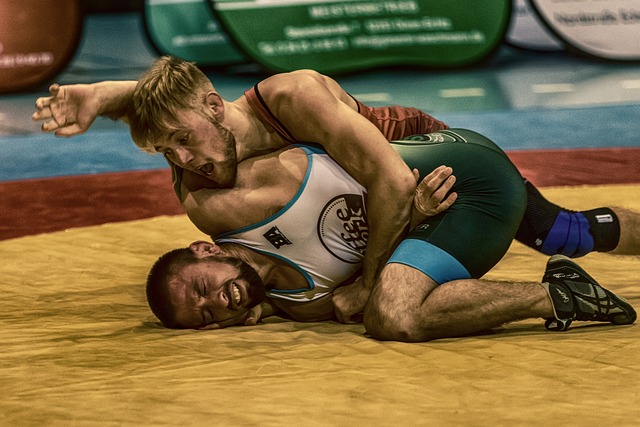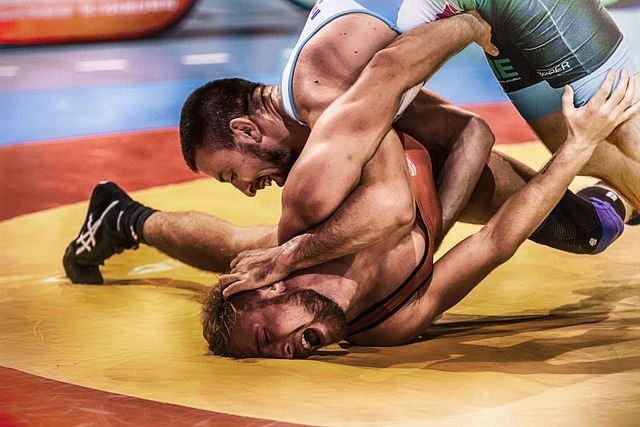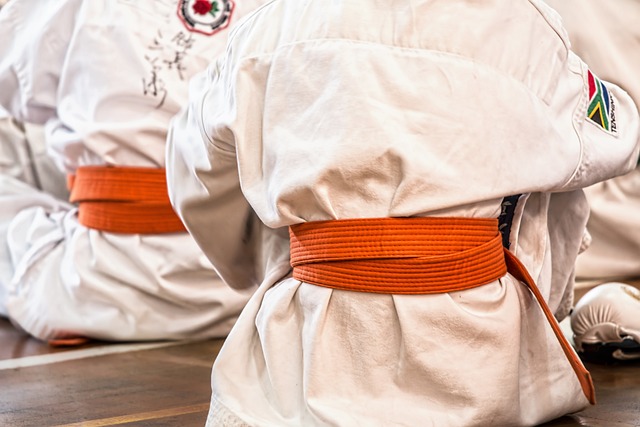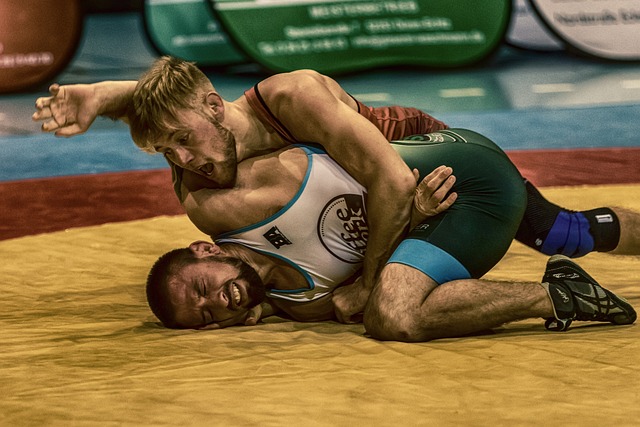Martial arts practitioners from different forms have the opportunity to compete against one another in a controlled setting and display their talents during martial arts competitions. These competitions, which span from regional to worldwide events, provide martial artists a chance to challenge themselves and improve their abilities. The competitive pressure may be a driving force, revealing areas in need of development.
Martial arts competitions foster discipline, mental tenacity, and physical fitness in addition to technical proficiency. Vigorous training is necessary to prepare for the competition and achieve general fitness. Athletes must also possess mental toughness and discipline in order to compete since they must stay focused and composed the whole event.

Martial artists may network and form connections with people in the community by participating in martial arts events. It’s common for participants to make links and friendships that open doors to other professional contacts and training possibilities down the road. However, there are other hazards that might take away from the spiritual side of martial arts, such injury and a focus on competitiveness.
Martial arts competitions may be exhilarating and fascinating for both competitors and spectators. While viewers may see accomplished martial artists in action, competitors can get insightful critique and experience. In general, martial arts competitions are vital to the martial arts community because they provide participants an opportunity to showcase their abilities and give onlookers an opportunity to learn about the art and sport of martial arts.
Martial arts competitions provide practitioners an opportunity to compete against other martial artists and give them a stage on which to display their talents and get respect from the martial arts community. These competitions take many different shapes, and each has its own set of rules. Some concentrate on certain genres, while others let several types compete. participants may participate in team events, which are an exciting alternative, where participants are divided into age or talent categories.
Apart from the physical advantages of practicing martial arts, participating in competitions may foster self-assurance, discipline, and concentration. Additionally, it provides a chance to interact and compete with martial artists from all regions of the globe. As technology becomes more and more involved in these competitions, athletes are using computerized scoring systems and video analysis software to increase scoring accuracy and pinpoint areas for growth.
Players are encouraged to act with fair play and sportsmanship in order to maintain the healthy and enjoyable atmosphere of events. This comprises playing by the laws of the game, being respectful of other teams, coaches, and officials, and graciously and humbly accepting the result of a match.
The quantity and scope of competitions will probably keep expanding as long as martial arts remain popular. But it’s crucial to respect the principles of martial arts and make sure that competitions are run sensibly and safely.
The following are some crucial details about martial arts competitions:
Rules and regulations: To guarantee safety and equity for all competitors, martial arts competitions have their own set of rules and regulations. Depending on the kind of martial arts practiced and the level of competition, these rules may change. In some competitions, using certain methods may be forbidden, and using them may result in penalties.
Judges are in charge of judging and assigning points to contests in martial arts competitions. To decide the winner, they may consider a variety of factors, including the quantity of strikes delivered, the number of takedowns performed, and match control. In some situations, judges may additionally take sportsmanship and technique into account.

Cultural relevance: In many nations, especially in Asia, martial arts competitions have great cultural value. Martial arts such as judo and karate, for example, have a long history and are ingrained in Japanese society. These competitions provide practitioners a chance to show off their abilities and promote the martial arts legacy of their nation.
Development of skills: Martial arts competitors may enhance their abilities and get experience in a competitive setting by participating in competitions. Competing in tournaments gives one the chance to put oneself to the test against more experienced opponents and get feedback from instructors and judges, which helps one improve their skills.
Building community: Among martial artists, martial arts competitions may also foster a feeling of camaraderie. Competitors from various universities and areas come together for tournaments, which provide them a chance to network, exchange ideas, and build new connections. In general, martial arts competitions provide practitioners a stage to demonstrate their abilities, pit themselves against more experienced opponents, and acquire experience in a competitive setting. In addition, they are culturally significant and may foster a feeling of belonging among practitioners.
There are a lot of well-known martial arts competitions held all around the world. These are the well-known ones:
The Ultimate Fighting Championship (UFC) is the biggest mixed martial arts organization in the world. It organizes events all around the globe and draws top competitors from a variety of martial arts styles, such as boxing, Brazilian jiu-jitsu, Muay Thai, and wrestling.
K-1 World Grand Prix: This yearly kickboxing competition, which has been held since 1993, is known for its exciting and fast-paced battles and attracts the top kickboxers in the world.
The World Championships in Judo: This annual competition, which is hosted by the International Judo Federation (IJF), features top judoka (judo practitioners) from all around the globe. It began in 1956 and continues now.
The World Karate Federation (WKF) organizes the biannual Karate World Championships, which include a variety of karate styles such as Shotokan, Goju-Ryu, and Shito-Ryu. Top-tier karateka from across the globe compete in this competition.
The World Championships in Taekwondo: globe Taekwondo Federation (WTF) tournaments are held every two years and draw the best taekwondo practitioners from across the globe. There are many weight classes for men and women.
The Abu Dhabi Combat Club (ADCC) Submission Wrestling World Championships is a biannual competition that attracts wrestlers, mixed martial artists, and Brazilian jiu-jitsu practitioners because to its exceptional technical proficiency. It has some of the top submission grapplers in the world.
Although these are some of the most well-known martial arts competitions, there are many more throughout the globe, each with its own distinct set of regulations, structure, and competitive style.
UFC stands for Ultimate Fighting Championship.
Founded in 1993, the Ultimate Fighting Championship (UFC) is a prestigious mixed martial arts (MMA) competition. Since then, it has expanded to become the biggest mixed martial arts company in the world, holding more than 500 events in more than 25 nations. The UFC has become well-known and well-respected because to its excellent production, talented competitors, and exciting matches.
The competition has produced several elite champions and made a substantial contribution to the general public’s recognition of mixed martial arts as a legitimate sport. The UFC’s adaptability and willingness to adjust have contributed to its success. Early UFC events, which pitted fighters from several martial arts disciplines against one another, were unregulated and unruly. But in order to guarantee the competitors’ safety and fairness, the UFC has now instituted weight divisions.
Pro fighters from many martial arts backgrounds, including boxing, Brazilian Jiu-Jitsu, wrestling, and kickboxing, are drawn to compete in the UFC. Fans are kept interested in matches because of the variety of styles that often produce exciting and unexpected outcomes. In summary, the UFC has had a substantial influence on the growth of mixed martial arts (MMA) and continues to be a highly regarded and cherished international competition.
The World Grand Prix of K-1
Since 1993, there has been an annual kickboxing competition called the K-1 World Grand Prix. It has some of the top kickboxers from all around the globe, including Americans, Europeans, and Japanese fighters. Over the years, the tournament has grown in popularity across the world and is renowned for its spectacular, fast-paced battles. Fighters are permitted to utilize a range of striking tactics, including as punches, kicks, and knee strikes, under the special regulations of the K-1 World Grand Prix.
In contrast with conventional kickboxing competitions, the K-1 World Grand Prix permits clinching, which may result in throws and sweeps. Fighters compete in many rounds over the course of one evening in a single-elimination tournament that is split into weight classes. The owner who wins the competition is named the K-1 World Grand Prix champion and is given a monetary award. The K-1 World Grand Prix has produced a number of renowned competitors and unforgettable situations throughout the years. Due to its popularity, numerous kickboxing organizations have sprung up all over the globe. Even if it has had some difficulties recently, the competition is still a significant occasion in the kickboxing and martial arts communities.

The World Championships in Judo
Every year, elite judokas from all around the globe compete in the globe Judo Championships, which is hosted by the International Judo Federation (IJF). With the exception of 1967 and 1979, the tournament has been conducted annually since its inception in Tokyo, Japan in 1956. Participants compete in both individual and team events, staying within their respective weight categories.
The competition is one of the most prominent judo competitions in the world as winners earn gold, silver, and bronze medals. Apart from offering judokas an opportunity to demonstrate their abilities and methods, the World Judo Championships have been instrumental in elevating the sport’s profile worldwide. Over the years, the IJF has made a number of modifications to the regulations and structure to make sure the competition stays interesting and thrilling for the competitors as well as the spectators.
The World Championships of Karate
The World Karate Federation (WKF) hosts the yearly World Karate Championships, a worldwide karate tournament. The tournament, which is held in many nations throughout the globe, features a variety of karate styles, including Shotokan, Goju-ryu, and Shito-ryu. Karatekas compete against one another in solo and team competitions according to their age groups and weight classifications.
The gold, silver, and bronze medal winners of the competition get medals. Top-tier karatekas from various countries participate in the World Karate Championships, which are recognized as one of the most prominent karate competitions worldwide. The competition gives karatekas a stage to display their skills and methods, and it has produced a number of well-known winners throughout the years. Additionally, it has contributed significantly to the growth of karate as a sport and its global recognition. The WKF is dedicated to improving the competition every year, and throughout the years, it has made several modifications to the regulations and structure to make it more exciting and captivating for the competitors as well as the spectators. Read more
Mastering the Art of Kickboxing: Techniques, Benefits, and Training Tips
